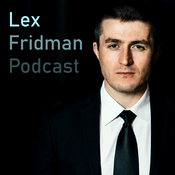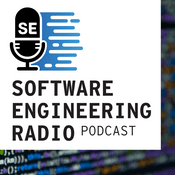55 episodes

A New Approach to Manufacturing Machine Connectivity for the Air Force
2025/12/12 | 18 mins.
The U.S. Air Force Sustainment Center’s Warner Robins Air Logistics Complex (WR-ALC) has taken a major step toward modernizing depot operations: securely connecting manufacturing machines, robots, and digital analytics tools across previously isolated enclaves.This capability was driven by Corsha’s Machine Identity Provider (mIDP), a zero-trust platform that recently received an Authorization-to-Operate (ATO) within the 402nd Commodities Maintenance Group. With mIDP, WR-ALC can authenticate every machine-to-machine connection and enable real-time data sharing for robotic systems and shop-floor automation.On this episode of the Aerospace & Defense Technology podcast, Corsha CEO Anusha Iyer explains how machine identity, continuous authentication, and secure connectivity are accelerating digital sustainment for the U.S. Air Force — and what this means for the future of industrial manufacturing and depot modernization.

How Packet Digital Is Scaling Domestic Drone Battery Manufacturing
2025/12/05 | 16 mins.
In this episode, Packet Digital CEO Terri Zimmerman breaks down the company’s push to expand U.S.-based production of advanced lithium-ion batteries for military unmanned aircraft systems. She discusses new investments, manufacturing plans at the Badland Batteries facility in North Dakota, and why domestic energy-storage capability is becoming a mission-critical requirement for future UAS operations. Zimmerman also offers insight into engineering challenges, supply-chain constraints, and the performance demands shaping the next generation of drone power systems.

How Virtual Twins are Reshaping Aerospace Design and Manufacturing
2025/11/26 | 29 mins.
As aerospace companies race to deliver cutting-edgetechnologies faster and more efficiently, digital innovation is taking center stage. For decades, manufacturers have relied on digital twins for design and simulation. Today, the industry is entering a new era with virtual twins. According to Dassault Systèmes, a virtual twin is "an immersive scientific digital model that mirrors a real-world product, system, or process in meticulous detail." Virtual twins allow engineers to predict performance, eliminate errors, and optimize designs before production even begins. This breakthrough is helping aerospace and defense manufacturers reduce development cycles, improve quality, and accelerate time-to-market for next-generation technologies.On the latest episode of the Aerospace & Defense Technology podcast, we sit down with two experts from DassaultSystèmes:Mariah Otte, Aerospace and Defense Solution ArchitectJason Roberson, Aerospace and Defense Industry Value ExpertTogether, they explain how virtual twins are transformingaerospace design and manufacturing, and what this means for the future of innovation in the sector. From simulation-driven engineering to predictive performance modeling, this conversation dives deep into the tools and strategies shaping tomorrow’s aerospace solutions.

A New Additive Manufacturing Accelerator for the US Navy in Guam
2025/11/21 | 31 mins.
This episode examines the technical and strategic foundations behind Guam’s new advanced manufacturing hub, developed through ASTRO America in coordination with the U.S. Navy’s Maritime Industrial Base Program. Neal Orringer of ASTRO America and Alex Benham of the Guam Additive Materials and Manufacturing Accelerator (GAMMA) provide an engineering-level discussion of the facility’s additive manufacturing capabilities, supply-chain objectives, and workforce development plans. The conversation outlines how the hub will support distributed sustainment, accelerate part production near the point of need, and bolster naval readiness across the Indo-Pacific.

The Hidden Heroes of Hydrogen Flight: Sealing and Materials
2025/11/14 | 10 mins.
While hydrogen-powered flight promises zero emissions and high efficiency, it also brings some of the toughest engineering challenges: cryogenic storage, high-pressure systems, and the constant risk of leakage. At the heart of solving these challenges are sealing solutions and advanced materials — the hidden heroes that make safe, reliable hydrogen flight possible.On this sponsored interview episode of the Aerospace & Defense Technology podcast, Margauz Ningre-Corier, Aerospace Sales and Market Development Manager at Omniseal Solutions is the guest expert who will dive into how these technologies are being developed, what hurdles remain, and where the future of hydrogen-powered air mobility is headed.
More Technology podcasts
Trending Technology podcasts
About Aerospace & Defense Technology
Listen to Aerospace & Defense Technology, All-In with Chamath, Jason, Sacks & Friedberg and many other podcasts from around the world with the radio.net app

Get the free radio.net app
- Stations and podcasts to bookmark
- Stream via Wi-Fi or Bluetooth
- Supports Carplay & Android Auto
- Many other app features
Get the free radio.net app
- Stations and podcasts to bookmark
- Stream via Wi-Fi or Bluetooth
- Supports Carplay & Android Auto
- Many other app features


Aerospace & Defense Technology
download the app,
start listening.




































